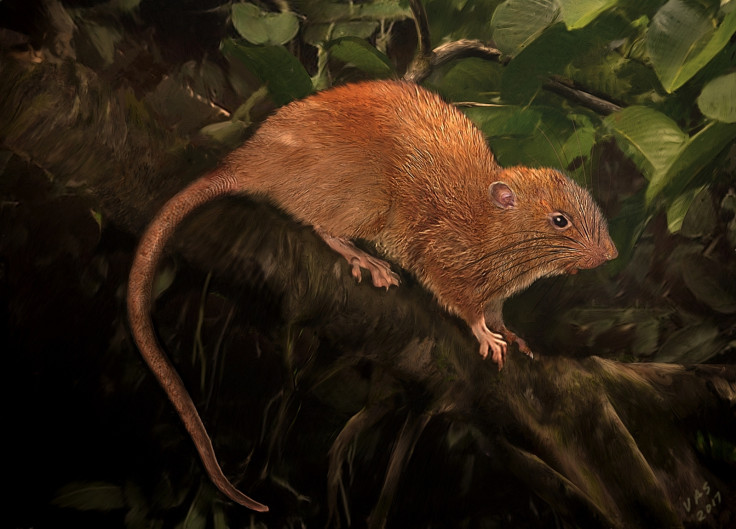Giant rat that can break coconuts with its teeth discovered in the Solomon Islands
The elusive species was identified after years of searching.

A giant, possum-like rat that can break into coconuts with its teeth has been discovered in the Solomon Islands after years of searching.
"The new species, Uromys vika, is pretty spectacular – it's a big, giant rat," said Tyrone Lavery, the lead author of the paper detailing the rat's discovery, published in the Journal of Mammalogy. "It's the first rat discovered in 80 years from the Solomons, and it's not like people haven't been trying – it was just so hard to find."
Lavery had heard rumours of the elusive rat after a trip to the Solomons in 2010. The country is made up of a series of islands a thousand miles north west of Australia. More than half of the mammals that live there are not found anywhere else on Earth.
"When I first met with the people from Vangunu Island in the Solomons, they told me about a rat native to the island that they called vika, which lived in the trees," Lavery said. "I was excited because I had just started my Ph.D., and I'd read a lot of books about people who go on adventures and discover new species."
However, years of searching were unsuccessful. "I started to question if it really was a separate species, or if people were just calling regular black rats 'vika'."
Because the species lives mostly in the treetops, it was extremely difficult to find. "If you're looking for something that lives on the ground, you're only looking in two dimensions, left to right and forward and backward. If you're looking for something that can live in 30-foot-tall trees, then there's a whole new dimension that you need to search."
But eventually, Lavery, with the help of colleagues John Vendi and Hikuna Judge, spotted one scurrying out of a fallen tree. "As soon as I examined the specimen, I knew it was something different. There are only eight known species of native rat from the Solomon Islands, and looking at the features on its skull, I could rule out a bunch of species right away."

The animal was compared to similar species and its DNA was cross-checked against those of its relatives, confirming it was indeed a new species. Lavery named it Uromys vika, in honour of the local name for the rat. "This project really shows the importance of collaborations with local people," he said.
"These animals are important parts of culture across Solomon Islands – people have songs about them, and even children's rhymes like our 'This Little Piggy Went to Market'"
Vika rats can be up to four times the size of normal black rats, weighing up to a kilogram and measuring about a foot and a half from nose to tail. They haven't been observed opening coconuts but there is evidence that they chew circular holes into a local nut that is just as hard to break into.
Islands like the Solomons are often filled with unique animals that evolved in total isolation. "Vika's ancestors probably rafted to the island on vegetation, and once they got there, they evolved into this wonderfully new species, nothing like what they came from on the mainland," Lavery said.
Even though Vika has just been discovered, it will be placed on the Critically Endangered list due to the fact it is so rare and its rain forest habitat is under threat. "It's getting to the stage for this rat that, if we hadn't discovered it now, it might never have gotten discovered. The area where it was found is one of the only places left with forest that hasn't been logged."
© Copyright IBTimes 2025. All rights reserved.





















